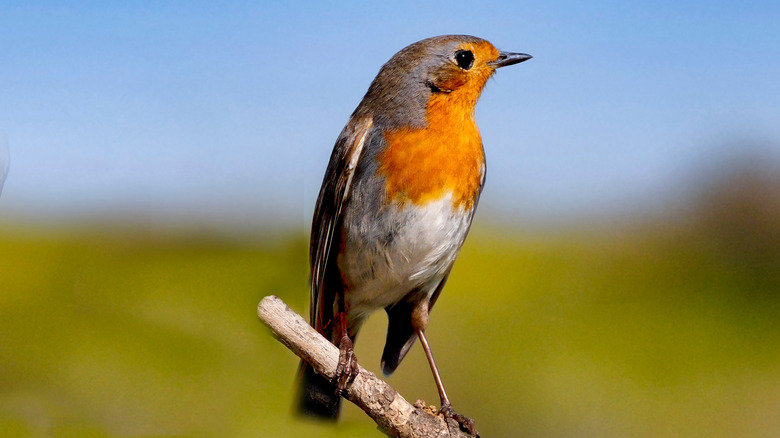How Do Migrating Birds Know Where To Go?
Twice a year, the world's skies fill with birds undertaking journeys that span entire continents. Arctic terns travel from pole to pole. Bar-tailed godwits cross the Pacific Ocean in a single, non-stop flight. Even the humble robin covers a good portion of the North American continent when it flies to Mexico (and sometimes even Guatemala). These feats of precision and endurance have fascinated humans for centuries, and scientists for nearly as long. How exactly do these amazing animals, with no maps or GPS, find their way?
For much of history, scientists could only guess. Some proposed that birds relied solely on the sun or stars to navigate. Some ancient Greeks believed birds transformed into entirely different species when winter came. Today, scientists are closer than ever to cracking the code. We know that birds can, for example, discern geographic north by observing the rotation of celestial bodies around the North Star before a long flight. Using their sharp senses of sight and sound undoubtedly plays a role, too, just like how they help birds find bird feeders, but there's more to the picture.
A growing body of research suggests that migratory birds are tuned into something much deeper — the Earth's magnetic field. Not only can many species detect the presence of this invisible force, but evidence suggests they can use it to determine latitude, direction, and possibly even their position on the globe. Just how they do it — the particular mechanisms birds use to sense magnetic fields — is where the mystery deepens and where some of the most exciting theories in biology, physics, and even quantum mechanics begin to emerge.
Birds' magnetic sensing abilities
One of the most compelling theories explaining avian navigation involves magnetite, a naturally magnetic mineral found in the upper beaks of some birds, including pigeons (a bird that's far more intelligent than most people think) This magnetite is believed to act as a biological compass, allowing birds to detect Earth's magnetic field and determine their position during migration. These magnetite-based magnetoreceptors are located in the skin of the upper beak, and might detect magnetic intensity and provide critical navigational information to the animal.
These magnetoreceptors are connected to the trigeminal nerve, which transmits sensory information to the brain. Electrophysiological recordings have shown that birds can sense magnetic intensity through these receptors. This mechanism is thought to contribute to a multi-factorial navigational "map" that birds use, alongside other clues, to navigate vast distances. While the presence of magnetite in bird beaks is well-documented, the exact role it plays in navigation is still under investigation, and the concept overall is still a controversial subject within the scientific community.
For one, magnetite has been discovered in other parts of bird bodies that are not thought to be connected to navigational abilities. And much remains shrouded about how information coming from the Earth's magnetic field gets processed at the neural level in the brain. The hypothesis gets further muddled by studies that show how inverting magnetic fields for birds in controlled experiments has no detrimental effect on birds' ability to navigate. Their sense of direction, however, tuned with magnetic sensing, also appears somewhat dependent on light, even the faint light of the stars. Vision, it seems, is playing an important role here somewhere — but where exactly?
Do quantum states help birds see?
Beyond magnetite, scientists have uncovered a remarkable theory: migratory birds may perceive Earth's magnetic field through quantum effects occurring in their eyes. This idea centers on a light-sensitive protein called cryptochrome, specifically cryptochrome 4a (Cry4a), found in the retinas of birds like the European robin. When blue light enters a bird's eye, it excites electrons in the cryptochrome molecules, creating pairs of electrons linked with quantum states known as radical pairs.
These radical pairs are sensitive to Earth's magnetic field; the field influences the spin states of electrons, altering the chemical reactions within the cryptochrome protein. This process, known as the radical-pair mechanism, may enable birds to detect magnetic fields as visual patterns, effectively allowing them to "see" the Earth's magnetic field as a visual cue. But while researchers have proven Cry4a could be the key component for this magnetoreception, they're still exploring how birds actually perceive our planet's magnetic field lines and if radical pairs are actually forming in migratory birds' eyes.
The more scientists learn about this ability, the better they could be poised to provide valuable insight to conservationists who are trying to preserve migratory bird populations — even some of the world's strange bird species that are actually poisonous. So, the next time someone uses the term "bird-brained" as an insult, remember that birds might just have the ability to see Earth's magnetic field, which is nothing short of incredible.


